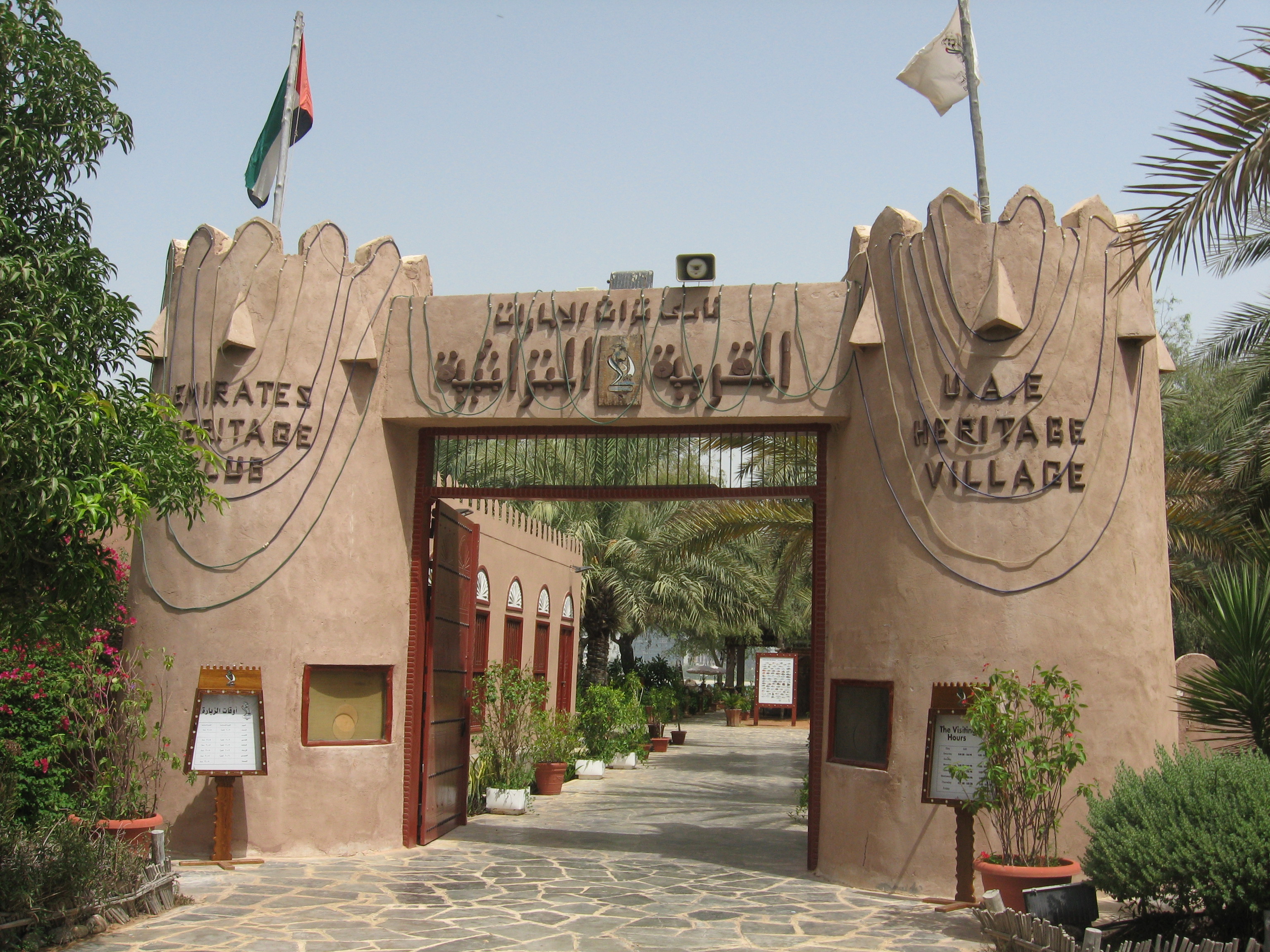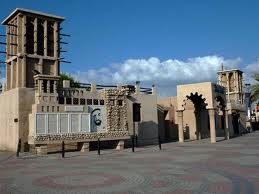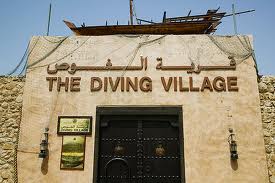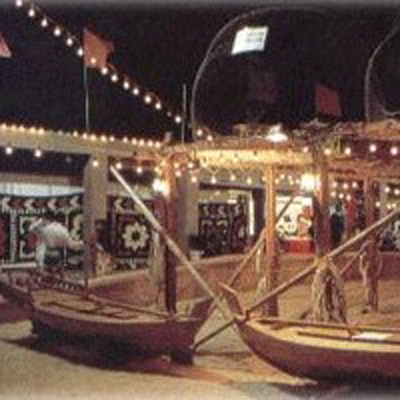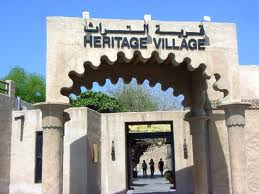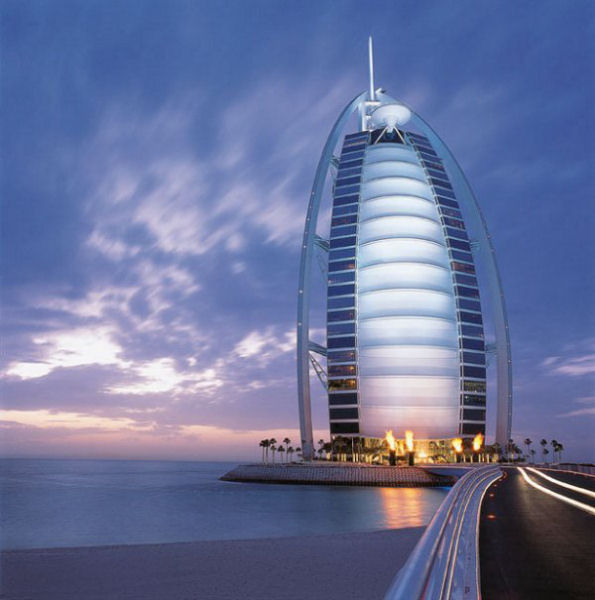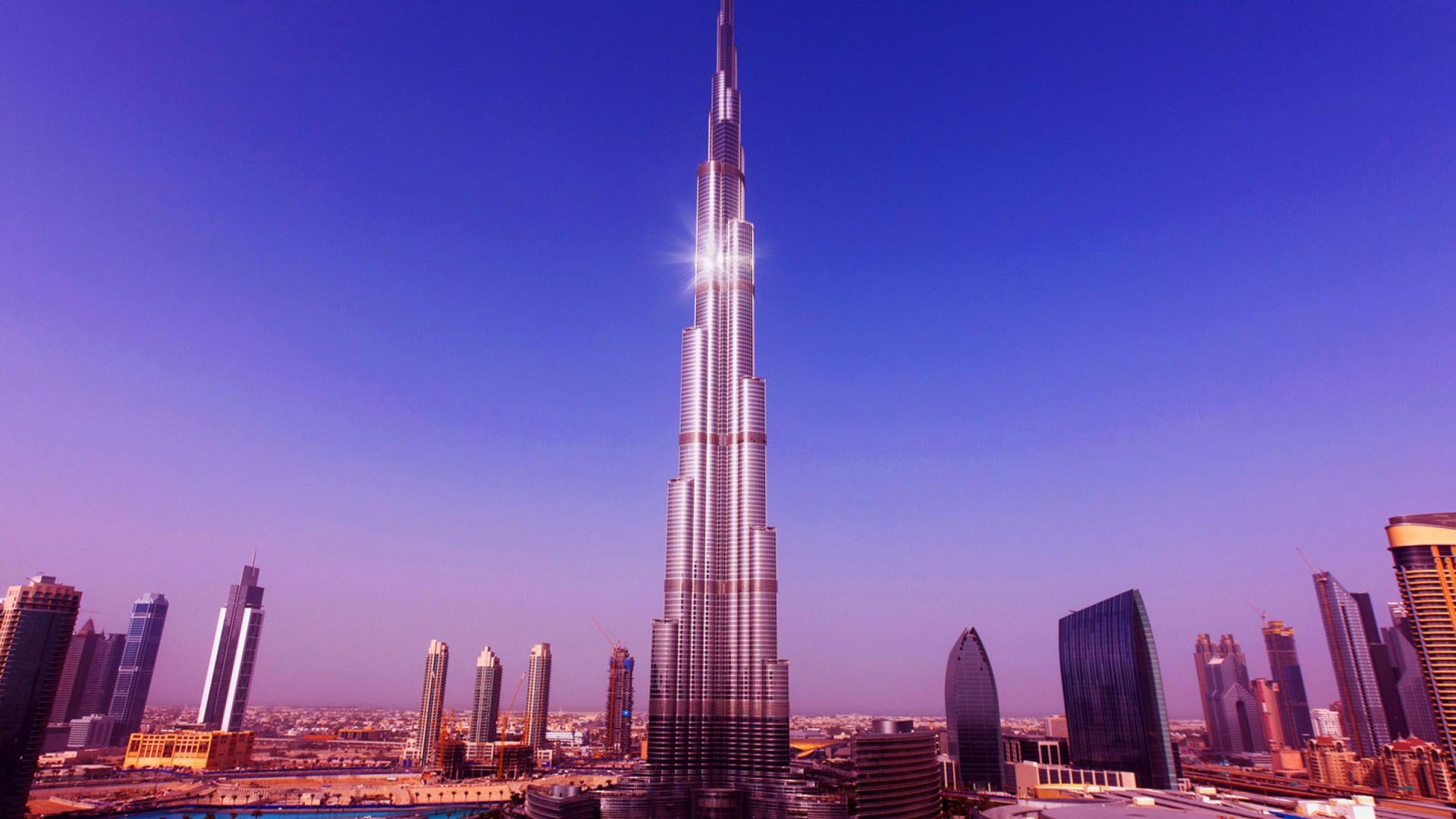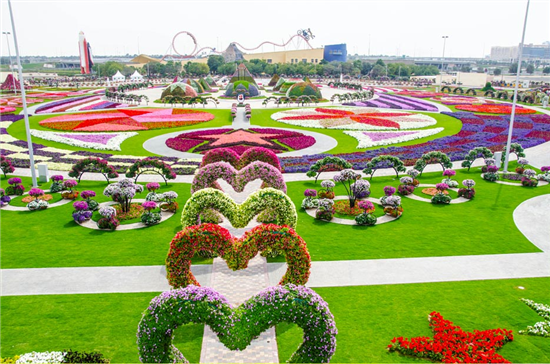United Arab Emirates /Dubai /Dubai
Sight Address : The Heritage Village is located near the mouth of Dubai Creek. Edit
Detail InformationEdit
Dubai’s Heritage and Diving Village may look fake and touristy, but it provides about as close a glimpse as you will get of the days when pearl-trading and smuggling were the tiny emirate’s main revenues. The centre’s flat, sand-coloured houses with traditional bastikiya (wind-towers) provide startling contrast to the ultra-modern buildings along Dubai Creek. The Heritage Village focuses on the UAE’s maritime past, trading activities and local history. There are several traditional shops, handicraft stores and exhibitions—you can also ride a camel. The Diving Village is a motley collection of pearl-diving artefacts and pictures of Dubai’s pearl divers and marine life. Some of the black and white photos are interesting, reflecting the tough life that many divers endured before scuba diving was invented. The Heritage Village is located near the mouth of Dubai Creek, the 14km stretch of water that separates the two parts of Dubai into Deira and Bur Dubai. Here visitors can look back in time and experience some of Dubai’s heritage, where traditional potters and weavers work and display their handicrafts. Abras (traditional wooden boats) cross the Creek, providing a delightful and scenic trip across the water. The Diving Village forms part of an ambitious plan to turn the entire Shindagha area into a cultural microcosm, recreating life in Dubai as it was in days gone by when pearl diving and fishing were central to Dubai’s economy and Dubai Creek became a central hub for trade in the region. A traditional heritage village, located near the mouth of the Creek, has been created where potters and weavers display their crafts. Here the visitor can look back in time and experience some of Dubai’s heritage. The Diving Village forms part of an ambitious plan to turn the entire Shindagha area into a cultural microcosm, recreating life in Dubai as it was in days gone by. The village provides a glimpse of Dubai’s traditional culture and lifestyle. The village features reconstructions of Dubai’s maritime past. Displays include a tented bedouin village with traditional weapons, chests and household utensils. Shops sell handicrafts and camel and donkey rides are sometimes available. Folk dance and music performances are staged from time to time. The village boasts a number of cafeterias and a seafood restaurant. Pearl diving, one of the oldest professions in the region, existed almost six to seven thousand years back. A pearl diving ship carried 10-60 people on board for an expedition. The team comprised a captain (Nokhaza), some divers, seeb, and other staff. The diver often risked his life to gather pearl studded oysters from the sea bed. He used to dive deep for more than two minutes to collect a handful of oysters. The season lasted only for six months starting from April because the Gulf waters during this season were warm and safe.
HistoryEdit
N.A.
Must SeeEdit
Popular
Visiting TimeEdit
8 am – 10 pm (Sat-Thu)
8 – 11 am & 4 – 10 pm (Friday)
Closed OnEdit
N.A.
Best Season to VisitEdit
November to April.
Best Time To VisitEdit
Morning, Afternoon & Evening.
Time Required for SightseeingEdit
2-3 Hours.
Ticket Required : No Edit
Individual National Adult : N.A.
Kids : N.A.
Individual Foreigner Adult : N.A.
Kids : N.A.
Still Photo Camera : N.A.
Video Camera : N.A.
Guide Required : No Edit
Approximate cost: N.A.
Dress Code (If Any) : No Edit
Dress Require: N.A.
Restaurants NearbyAdd / Edit
How to ReachEdit
Taxi : Taxi is also easily available here, Most visitors will opt for public taxis from the airport, which are readily available just outside arrivals, which use the meter and start at AED 25. If you can’t find one otherwise, you can attempt to call a taxi at 04-2080808
Bus : The Government of Dubai operates a network of buses linking Dubai city with the capitals of the other six emirates of the UAE. The buses run under the name Emirates Express and operate from various bus terminals in Dubai. Buses operate every 40 minutes from 6.20am from both Dubai’s Al Ghubaibah bus station and Abu Dhabi’s main bus station. The two-hour journey cost AED 25. Frequent buses run between Dubai and Sharjah. There are several different routes and buses depart from various bus stations in Dubai including Al Karama, Gold Souq, Baniyas Square, Jebel Ali and Al Ittihad Square. Fares are at Dh7 .
Train : Dubai Metro is composed of at-grade elevated Type 1, Type 2 and Type 3 (T1, T2 and T3, respectively) underground stations (U) and underground transfer station types (UT). Type 1 is the regular at-grade concourse station, Type 2 is a regular elevated concourse station, and Type 3 is an elevated special track station with an extra track to hold a non operational train. Underground transfer stations will be accommodating both the Red and Green lines for easy transfers. Besides these differences, there are four themes used in the interiors of the stations: earth, water, fire and air. Earth stations have a tan-brown colour effects; water has blue-white colour effects; fire has orange-red colour effects; and the air has green colour effects. Single tickets range from Dh2-8.50, or double that for use of the “Gold” first class carriage. Train run every 3-5 minutes from 5:50 AM to Midnight every day except Thursday and Friday, when services are extended to 5:50 AM to 1 AM and limited to 1 PM to Midnight, respectively. All stations are air-conditioned and there’s a large network of feeder buses.
Air : Dubai International Airport (DXB), which is located about 2.5 miles southeast of Dubai, links the emirate to over 200 world destinations by 100 airlines operating about 5,600 flights every week. Terminal 1 of Dubai International Airport serves as a base for international flights while Terminal 3 exclusively caters for Emirates. Terminal 2 on the other hand, is mainly used by smaller airlines operating to Iran, Pakistan and Afghanistan. India can avail flight services from metropolitan cities like Delhi, Mumbai, Kolkata, Chennai, Ahmedabad and Bangalore. Besides Emirates, Jet Airways, Air India, Thai Airways and Indian Airlines are some of the major airlines serving travellers flying to Dubai from India. Most visitors will opt for public taxis from the airport, which are readily available just outside arrivals, which use the meter and start at Dhs 25. Taxis are on the left when you come out of terminal 1.
Airport telephone number: +971 (0) 4 224 5555
Others : By Boat : An easier way of crossing the Dubai Creek is by abra, essentially a small ferry. Abra stations are located along the Creek on both the Bur Dubai and Deira sides, and the system of filling the boats is remarkably efficient. The cross-river trip costs 1 Dirham (AED 1) per passenger, payable to the driver after the boat has left the station, and affords a very picturesque view of the city (not to be missed). Abras set off very regularly, and the service is available round-the-clock.
Waterbus : The Waterbus is another option for tourists who want to go by boat but avoid the abra crowd (or the heat). It is a part of Dubai’s public transport system, so again a Red ticket, or any Nol card is required for the journey. Can be purchased at the waterbus station. The waterbus also features a ‘tourist route’ round trip – while it is convenient, it can get quite expensive (Dh50 for an adult, Dh25 for a child).
By Car : There are a countless number of Rent-A-Cars that will provide a mode of transportation for very cheap rates and very little paperwork. An International Driving Permit is not necessarily required, but hire companies may not rent a car without one. Some agencies will hire out cars complete with drivers. Visitors taking advantage of this option will need to make certain that their driver knows his way around as many do not.
Things to CarryEdit
- Carry camera.
Safety / WarningEdit
- Never take a photograph with a person not in your travelling party in it without asking for permission first.
- Public drunkenness is strictly prohibited, as is drinking and driving.
- Dubai is in a Muslim country, clothing should be modest in order to respect local customs.
HelplineEdit
- Police – 999 / 2292222
- Fire Department – 997
- Ambulance – 999
